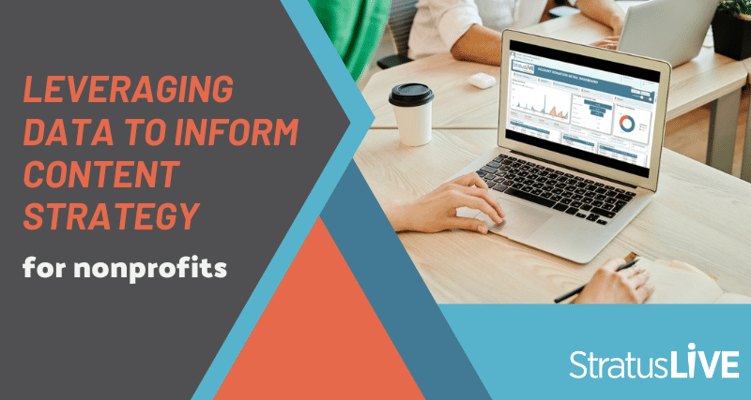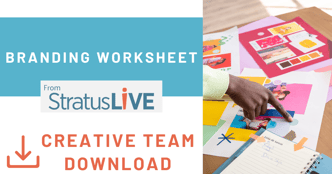
In 1996, Bill Gates wrote an essay called “Content is King.” In it, he discusses the potential of the internet to ignite a substantial increase in content creation and new revenue streams. Over 25 years later, his assessment holds true:
“If people are to be expected to put up with turning on a computer to read a screen, they must be rewarded with deep and extremely up-to-date information that they can explore at will. They need to have audio, and possibly video. They need an opportunity for personal involvement that goes far beyond that offered through the letters-to-the-editor pages of print magazines.”
Nonprofit marketers understand how critical it is to publish consistent, compelling content to raise brand awareness and inspire donor engagement. Today, with the rise in online giving and digital technologies content can be made even more compelling and actionable by leveraging data to craft personalized experiences.
The power of data to build an effective content strategy
Every constituent data point that your nonprofit collects offers keen insight into a donor’s preferences, interests, and potential engagement. By harnessing this data, you can develop targeted communications that reflect your understanding of your donors. These personalized communications stand out in a sea of mass donation appeals and stale newsletters.
Communications that reflect donor values and make a relevant ask catch the eye of your supporters and drive action. By incorporating your data within your content strategy, your organization’s fundraising goals will be met while your donor feels fulfilled with their contribution – knowing that it reflects their interests and giving capacity.
Types of data collected by nonprofits
Given the significance of utilizing data to shape content, understanding the diverse types of nonprofit data collected is crucial. Here are some data points to consider when crafting strategy and messaging:
- Demographic information (Age, Gender, Marital Status, Employment)
- Interests/Cause Concepts (By tracking a constituent’s participation in campaigns, events, volunteer projects, or designations, fundraisers and marketers can identify a constituent’s inclination to support a particular program or initiative).
- Engagement score (A point total that indicates a constituent’s level of involvement with your organization).
- Giving history and frequency
- Event attendance
- Volunteer history
- Website analytics (pages viewed, time on page, conversions, bounce rates)
- Email engagement – open and click-through-rates
Analyzing and interpreting donor data
Now that we identified several data points that can inform your content strategy, let’s discuss how to analyze and interpret this data.
The data collected from your website and housed within a CRM provides tremendous donor insight. By effectively analyzing this data, you can craft compelling content that speaks to donor interests, segment donors effectively, and build nurture campaigns to drive toward your intended actions.
Tailoring your content to donor preferences
Utilizing your donor data, your organization can tailor your content to your donors’ preferences. To successfully leverage this data, first you must identify the donor segment you want to address within your content. Who is the intended audience?
This segment may be your audience you crafted during a brand exercise that you are cultivating, one-time donors, mid-level donors, event attendees, or LYBUNT or SYBUNT donors. Consider the characteristics of each of these donor groups and develop personalized content for these segments.
Here are some data-driven tactics to consider:
- For prospective donors, consider an awareness-building campaign with key messaging that highlights your organization’s mission and impact. The opportunity to personalize the content for each donor lies in highlighting their unique role in contributing to that mission. Scan through any website or blog content they may have read. Provide more detailed information within an email. Analyze demographic data and develop an ad campaign targeting young professionals to volunteer with your cause as an on-ramp to donating.
- For mid-level donors, leverage past giving history (frequency and amounts) to create tailored content. Spotlight how each donor’s past contributions contributed to specific impact. Create custom landing pages with giving levels with higher, but realistic ask amounts.
By intentionally and respectfully incorporating your donor data within your content plan, you will inspire deepened involvement.
Leverage your website data to inform content strategy and conversions
Beyond your CRM data, it is critical to consistently evaluate website content and performance. This consistent evaluation will ensure that your donors have a positive user experience and can easily access engaging, informative content.
Your digital teams can analyze website data to identify the most-viewed content. The most viewed website pages indicate which keywords and topics users find valuable or engaging. Consider developing additional resources or interactive content (quizzes or surveys) that relate to the content of these pages for even more engagement. Promote your most-viewed content on social media and within email campaigns. A final step could include hosting online or in-person events that dig deeper into these content areas.
Beyond informing your content strategy, your website data indicates the strength of your calls-to-action or conversions. It is crucial to analyze the success of your conversions and align them with your donor behavior to optimize your online fundraising efforts.
Segment your website visitors based upon their conversions (for example - donations versus volunteer sign-ups) and trigger nurture campaigns with custom content based upon the data provided. Another step is to calculate your conversion rate; if a certain page has a lower percentage of conversions, tweak the content or test the page's usability.
By effectively leveraging your website's data, you can build a stronger content strategy that will drive your users toward your desired goals.
Conclusion
The increase in online giving in the digital era has only catapulted the need for nonprofit marketers to double-down on content and digital strategies. By effectively leveraging your donor and website data, you can inform your content strategies based on data. This data-driven approach will ensure you meet your organization’s goals while better serving the needs of your donors.
StratusLIVE is built to ensure you are leveraging data and tools to maintain a cohesive brand experience. If you are looking for more ways to strengthen your brand, start here.







